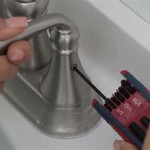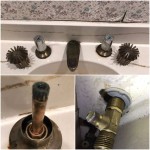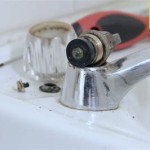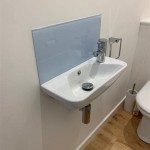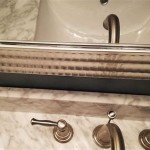How To Get Rid Of Black Mold In A Bathroom
Black mold, a common sight in bathrooms, can be more than just an eyesore. It can pose health risks, particularly for individuals with respiratory issues. Fortunately, addressing black mold in a bathroom is achievable with the right approach. This article outlines the essential steps to eradicate black mold from your bathroom and prevent its return.
1. Identify the Source of Moisture
Black mold thrives in damp environments. Before tackling the visible mold itself, it's crucial to identify the source of moisture that is feeding its growth. Common culprits include leaky pipes, poor ventilation, inadequate drainage, and excessive humidity.
To pin down the source, inspect the areas surrounding the black mold. Look for signs of water damage, such as peeling paint, warped wood, or discolored grout. Pay close attention to showerheads, faucets, and the area around the tub. Consider using a moisture meter to measure humidity levels, particularly in hard-to-see areas.
2. Prepare for Mold Removal
Once you've identified the source of moisture, you can begin the process of removing the visible mold. This requires proper preparation to ensure your safety and the effectiveness of the cleaning process.
First, gather the necessary supplies. This includes a HEPA vacuum cleaner to collect mold spores and prevent their dispersal, a spray bottle, a stiff-bristled brush, cleaning cloths, eye protection, rubber gloves, and a respirator mask for protection against mold spores. It's also recommended to wear old clothes that you don't mind getting dirty or damaged.
Before starting, air out the bathroom by opening windows and doors to improve ventilation. This helps to reduce the concentration of mold spores in the air. You'll also want to isolate the affected area to prevent mold from spreading to other surfaces. Use plastic sheeting to cover furniture and other items that cannot be moved.
3. Remove Black Mold
With the bathroom properly prepared, you can now tackle the visible mold. While there are various commercially available mold removal solutions, a simple and effective approach involves using a mixture of water and white vinegar.
To prepare the solution, mix equal parts white vinegar and water in a spray bottle. Apply this solution directly to the affected areas, saturating the mold thoroughly. Allow the solution to sit for at least 30 minutes to penetrate the mold spores. Scrub the mold using a stiff-bristled brush, paying attention to the areas where mold has accumulated. Use a separate brush for each affected area to prevent cross-contamination.
After scrubbing, wipe the affected area with a damp cloth and allow it to dry completely. Repeat this process as needed until all visible mold has been removed. Remember to discard the cleaning materials appropriately to avoid further contamination.
4. Resolve Underlying Moisture Issues
Removing visible mold is just the first step. It's essential to resolve the underlying moisture issues that caused the mold growth in the first place. Failure to do so will only result in the mold returning.
If the source of moisture is a leaky pipe or faucet, contact a plumber to repair the issue. Ensure that all pipes and faucets are properly sealed and functioning correctly. For inadequate ventilation, consider installing an exhaust fan in the bathroom. This will help to remove excess moisture and prevent mold growth.
If poor drainage is the culprit, check the bathroom floor for any clogs or obstructions. Ensure the drains are clear of debris and unclogged. You may need to use a drain cleaner to remove stubborn clogs. Additionally, make sure the shower floor slopes correctly to allow water to drain away effectively.
For excessive humidity, consider using a dehumidifier to remove moisture from the air. Regularly ventilate the bathroom after showering and ensure that towels are dried properly to prevent moisture from lingering.
5. Monitor and Repeat
After treating black mold, it's crucial to monitor the bathroom regularly for any signs of its return. Regularly check for signs of moisture damage, such as peeling paint, warped wood, or discolored grout. If you notice any signs of moisture, address the issue immediately to prevent mold from reappearing.
Should black mold reappear, repeat the process of removing the mold and addressing the source of moisture. Regular maintenance and vigilance are key to keeping your bathroom free from black mold and maintaining a healthy environment.

Black Mold In The Shower How To Clean It Kitchen With Matt

What Do About Black Mold In The Bathroom Bob Vila

How To Remove Black Mold From Your Shower Clean Tips

How To Treat Black Mold In Your Bathroom A J Property Restoration

How To Get Rid Of Mold In The Shower On Bathroom Walls Clorox

Black Mold In The Shower How To Clean It Kitchen With Matt

How To Get Rid Of Black Mold In Bathrooms

Black Mold In Shower Is It A Cause Of Worry And What To Do About Aqa

Killing Preventing Black Mold In The Bathroom

How Do I Remove Black Mould From Shower Floor
Related Posts
